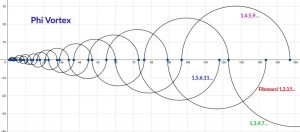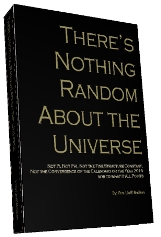We mentioned at the end of our last article that Joseph was Yesod, above his brother, which was why the tree-of-life proportions were reversed from what is normally presented as Leah over Rachel. So we just wanted to point out that the all-important reunion between Joseph and Jacob that completed and established the Tree-of-life on earth occurred in the 80th paragraph of the Torah, and as the Arizal explains below, 80 is the numerical value of Yesod.
Yesod is the dimension through which all the life forces (shefa) are  funneled down to our world (level). What the Torah (Bible) is doing here in these portions of Bereshit is reconstructing for us a schematic of how our world really works and the spiritual principles upon which it is based.
funneled down to our world (level). What the Torah (Bible) is doing here in these portions of Bereshit is reconstructing for us a schematic of how our world really works and the spiritual principles upon which it is based.
“Yesod” is spelled: yud-samech-vav-dalet = 10 + 60 + 6 + 4 = 80
Before we quote the Ari verbatim below, please recall that our last article was all about the sevens(7).
From the teachings of Rabbi Yitzchak Luria
The seven names…are called ‘seven pearls’….
Another reason [this sefira] is called “yesod” is the following. What is written in the Zohar (II:92a, in Raya Mehemna) about the verse, “Remember the Shabbat day” (Ex. 20:8), concerning the seven names, is well-known. They are called “seven pearls”, and the Shabbat is called “Y-ah Ado-nai“.
These seven names are associated with the seven blessings of the Shabbat Standing Prayer (see third installment of parashat Tetzaveh), and that the fourth blessing of the Shabbat Standing Prayer, which is the only one that refers specifically to the Shabbat, is associated with the name Y-ah Ado-nai.
It is also known that the Shabbat is associated with yesod, which is called “the Seventh”.
Normally, we associate the Shabbat with malchut, the seventh midah. However, in the context of Zeir Anpin, malchut is not truly a separate sefira, but is called “the crown of the yesod“, associated physically with the glans of the male reproductive organ. Malchut comes into its own only as the full partzuf of Nukva. Thus, the “seventh” of the midot within Zeir Anpin – and therefore, the Shabbat as well – can still be considered to be part of yesod.
Therefore, the numerical value of “yesod” is the same as that of the names Y-ah Ado-nai.
“Yesod” = 80, as above.
“Y-ah Ado-nai” is spelled: yud-hei alef-dalet-nun-yud = (10 + 5) + (1 + 4 + 50 + 10) = 15 + 65 = 80.
These two names correspond to the two aspects with [yesod]: yesod [itself] and its “crown”. Yesod itself is called “Y-ah“, and its “crown” is called “Ado-nai“.
To Be Continued with the death bed End-of-Days revelations of Jacob to his sons.




